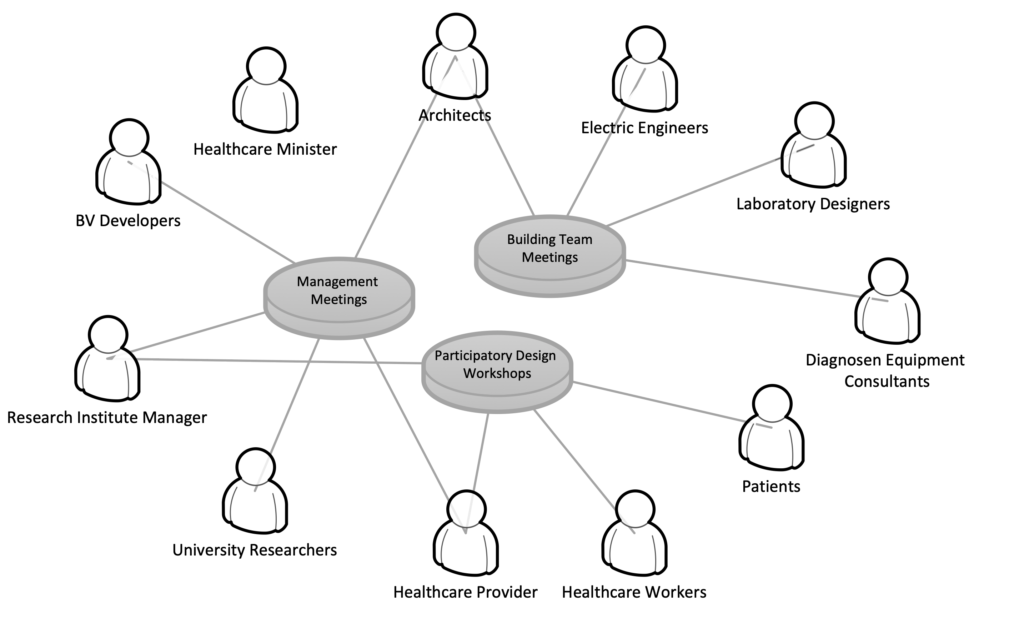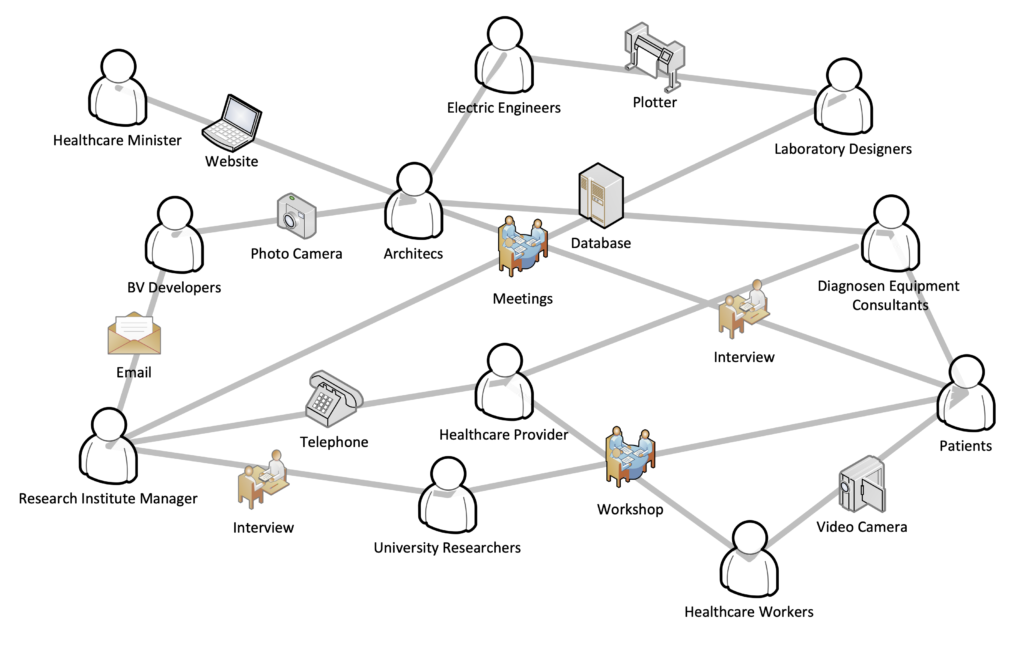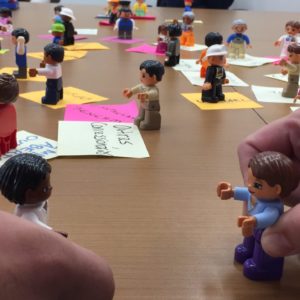Participation is an issue that crosses the boundaries of a single discipline. Its fundamental assumption is that people can make better decisions together than led by a single discipline. To approach participation in the renovation of healthcare facilities, it is important to consider disciplines concerned with the built environment – Architecture, Engineering, and Construction (AEC), as well as disciplines concerned with organizational behavior – Organization Studies, Management, Information and Communication Technologies (ICT), and care services – Medicine, Nursery, Nutrition, and other specialties.

Participation promotes exchanging or, at least facing, the differences between disciplinary perspectives. The challenge to make decisions together requires not only crossing boundaries between disciplines but also going where there is no discipline: the unfathomable world of buildings and patients.
Although buildings and patients are objects of disciplinary knowledge, they are subject to all kinds of contingencies stemming from their own conditions. That is why practitioners in these disciplines develop practical tools to articulate what they face in specific situations in contrast to the generalized knowledge developed by the discipline.
Practice-oriented research generally looks at either the knowledge crystalized in tools or the knowledge that could be crystallized into new tools, understanding that as an extension of the disciplinary knowledge. Though that can advance the discipline, it cannot assist working across disciplines.

These tools not only represent design possibilities, they also shape the way people can participate of the design process. Depending on the tool used, managers, nurses, doctors, patients, and other participants have the opportunity to comment or to manipulate the design for adjustments. Mediation is necessary to balance and confront the heterogeneous knowledge, power, intentions, and feelings that participants have.
To follow participation across disciplines, it is more suitable to follow mediation processes and not just tool usage. Mediation spread through multiple tools, revealing in the shifts from one tool to another, the conflicts and agreements between disciplines. However, mediation also extends to the boundaries of disciplines, to undisciplined knowledge. Patients participating in design do not represent a discipline, like an architect or engineering does, even if that patient is an expert in being a patient, like a chronic patient. That is why participatory design is transdisciplinary.

